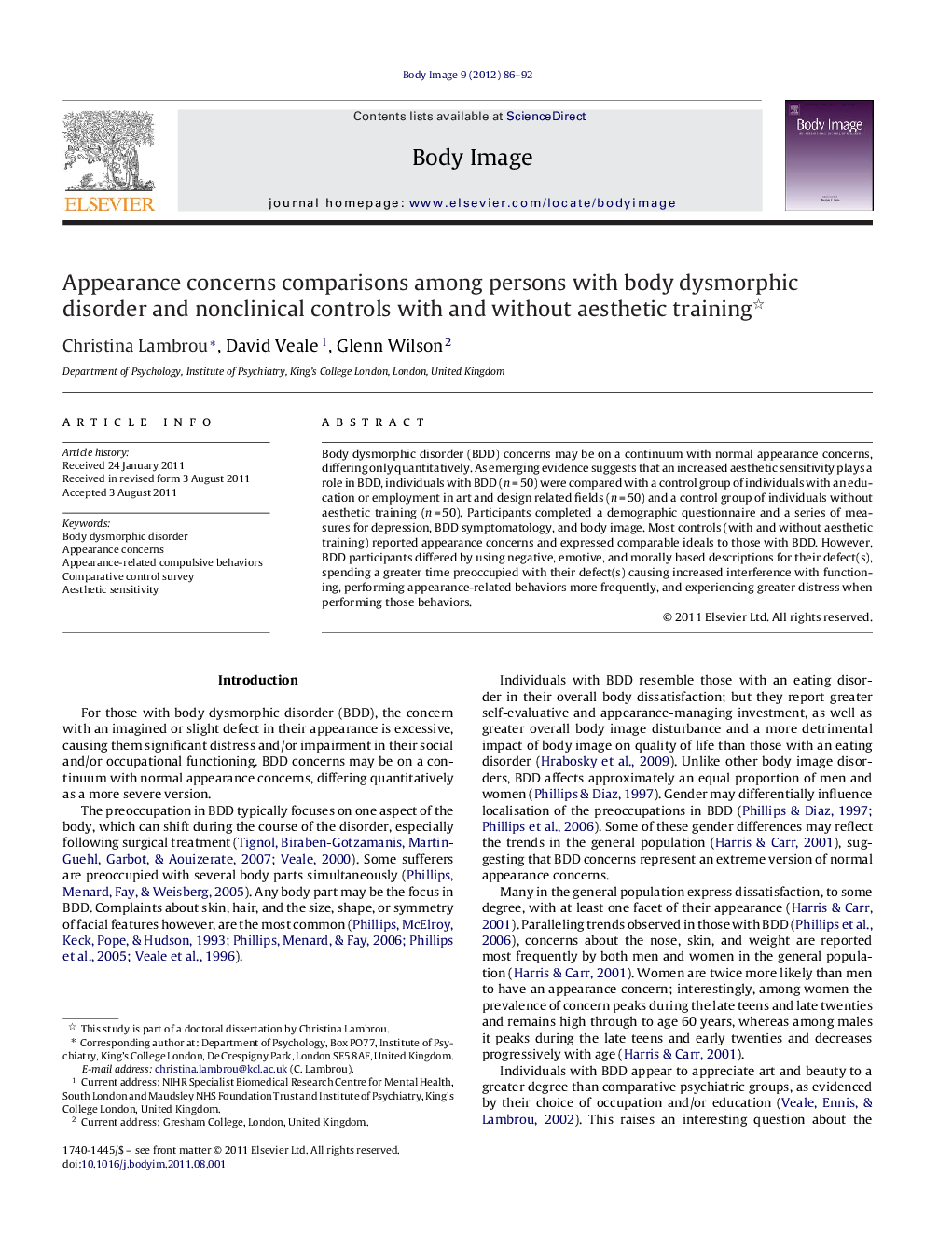| Article ID | Journal | Published Year | Pages | File Type |
|---|---|---|---|---|
| 903202 | Body Image | 2012 | 7 Pages |
Body dysmorphic disorder (BDD) concerns may be on a continuum with normal appearance concerns, differing only quantitatively. As emerging evidence suggests that an increased aesthetic sensitivity plays a role in BDD, individuals with BDD (n = 50) were compared with a control group of individuals with an education or employment in art and design related fields (n = 50) and a control group of individuals without aesthetic training (n = 50). Participants completed a demographic questionnaire and a series of measures for depression, BDD symptomatology, and body image. Most controls (with and without aesthetic training) reported appearance concerns and expressed comparable ideals to those with BDD. However, BDD participants differed by using negative, emotive, and morally based descriptions for their defect(s), spending a greater time preoccupied with their defect(s) causing increased interference with functioning, performing appearance-related behaviors more frequently, and experiencing greater distress when performing those behaviors.
► BDD concerns may be on a continuum with normal appearance concerns. ► Most controls reported concerns and expressed comparable ideals to those with BDD. ► BDD participants differed by using negative, emotive, and morally based descriptions. ► They also performed appearance-related behaviors more frequently than controls. ► Higher levels of distress when performing those behaviors most differentiated them.
